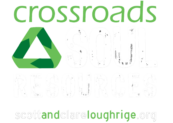
“Who’s Being Stiff-Necked?
(Hint: It Might Be You)”
“But they did not listen to me or pay attention.
They were stiff-necked…”
—Jeremiah the Prophet (False Religion is Worthless, Jeremiah 7:26)
In Prophet-Speak, being “stiff-necked” means refusing to listen, resisting change, or being too stubborn to care. In modern terms? It’s doubling down on bad takes, dismissing hard truths, and assuming everyone else is the problem.
Jeremiah warned against using God as a “get out of jail free” card while ignoring injustice—mistreating the vulnerable, shedding innocent blood, and more (Jeremiah 7 is packed with stiff-neckedness). Sound familiar? Today’s version: Deflect. Blame. Gaslight. Rinse. Repeat.
And here’s the kicker—nobody thinks they’re stiff-necked. That’s kind of the point.
It’s being so convinced of your own rightness that you can’t even consider another perspective. It’s a tale as old as time—and a recurring theme in faith, politics, and family group chats.
We still pull the same moves Jeremiah called out—just with better PR. We spin it, sidestep accountability, and master the art of psychological and spiritual bypassing. Cultural blind spots? We’ve got plenty. And through it all, we convince ourselves the problem is everyone else.
So, maybe it’s time to stop flexing our stiff-necked righteousness and start practicing ways to catalyze change, orchestrate healthier connections, and forge new paths in life and relationships.
We use a personality system that softens the stiffness, creates possibilities, and makes transformation within and between us possible.
👇🏽 [Keep reading here.]
The Enneagram: Comfort & Discomfort
“The Enneagram comforts and discomforts. It names how we default and defend ourselves from truth—especially truth about ourselves! Jesus continually struggled with people who were closed to new truth about God and themselves. During his last hours with his followers, Jesus said, ‘I have much more to say to you, more than you can now bear’ (John 16:12). Jesus’ friends just weren’t prepared to hear truth that contradicted their agendas and self-understanding. Two thousand years later, we are no more prepared to bear and practice truth than Jesus’ disciples were.”
—Spiritual Rhythms for the Enneagram, (Loughrige & Calhoun)
Understanding the Harmony Triads
The Enneagram’s Harmony Triads reveal our default ways of engaging with the world through three centers of intelligence:
Head (5, 6, 7) – Logic, analysis, planning
Heart (2, 3, 4) – Emotion, connection, relationships
Gut (8, 9, 1) – Instinct, action, justice
When integrated, these centers create a more balanced and transformative way of living. Without integration, we remain stuck—defending, resisting, and stiff-necked.
Justice, Humility, and Mercy: A Trinitarian Way Forward
Instead of clinging to rigid positions, what if we practiced justice, humility, and mercy in harmony? (Micah 6:8)
1️⃣ Justice: “There is more than one form of justice. In fact, there are two: justice for me, and justice for you.” What does justice look like when it includes mercy and humility?
2️⃣ Humility: The word humus (earth, ground) reminds us that to be humble is to stay rooted in our interconnection—formed from the dust and breathed into by God. What does humility look like when it includes mercy and justice?
3️⃣ Mercy: Neuroscience reveals that memory is mapped in the heart, giving us the capacity for compassion. Mercy is more than an idea; it’s an embodied practice. What does mercy look like when it includes justice and humility?

Brain Function & Stiff-necked (stress) Response
Dr. Jerome Lubbe’s Brain Function Model helps us see how our Enneagram triad influences our stress responses:
Left Brain (5, 6, 7): Logical, analytical, detail-focused
Right Brain (2, 3, 4): Creative, emotional, relational
Brainstem (8, 9, 1): Instinctual, survival-focused
Reflection:
How do logic, emotion, or survival instincts influence your reactions in tense situations?
Which part of your brain is most active when navigating difficult conversations?
What if whole-brained reactions were enacted in times like these?
Living in Harmony: Enneagram Life & Work
Each Harmony Triad brings unique strengths to justice, mercy, and humility:
1-4-7: “Pathfinders” (Visionary & Ethical)
Pathfinders chart new, ethical paths toward justice. They blend moral clarity, emotional depth, and creative solutions.
1 (Good Reformer): Provides a moral compass
4 (Original Creator): Brings emotional authenticity
7 (Enthusiast): Offers optimism and innovation
2-5-8: “Catalysts” (Bold & Transformative)
Catalysts ignite change through insight, compassion, and decisive action.
2 (Loving Helper): Fosters connection and empathy
5 (Wise Observer): Brings analytical clarity
8 (Strong Challenger): Leads with bold action
3-6-9: “Orchestrators” (Strategic & Collaborative)
Orchestrators align people and perspectives to create systemic change.
3 (Effective Achiever): Drives results with focus
6 (Faithful Loyalist): Builds trust and accountability
9 (Ambassadorial Peacemaker): Maintains harmony and inclusivity
Want to learn more?
We don’t have to stay stuck in old patterns.
Join us for the ©iEnneagram “Motions of the Soul” Retreat or our Training & Certification Program with Clare Loughrige. Whether you’re seeking renewal for your own soul or professional training in Enneagram integration, we’re here to help you move beyond reaction into transformation.
Join us online or in person this June.
Learn more & register here.

